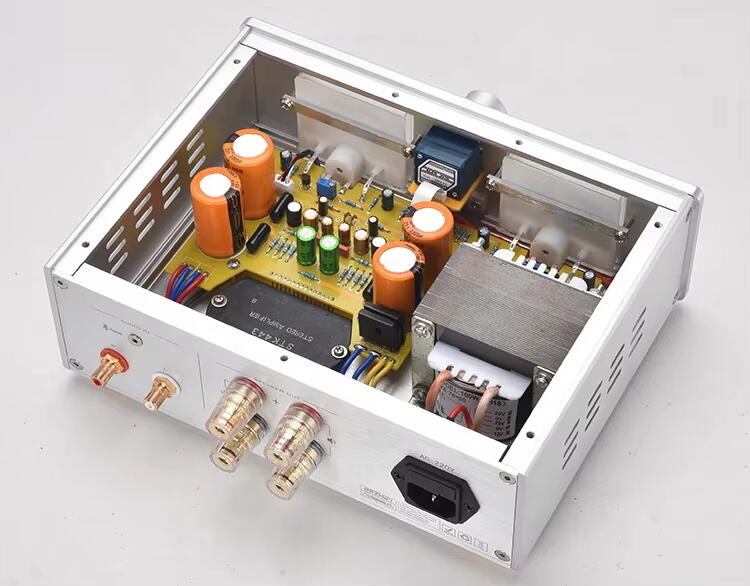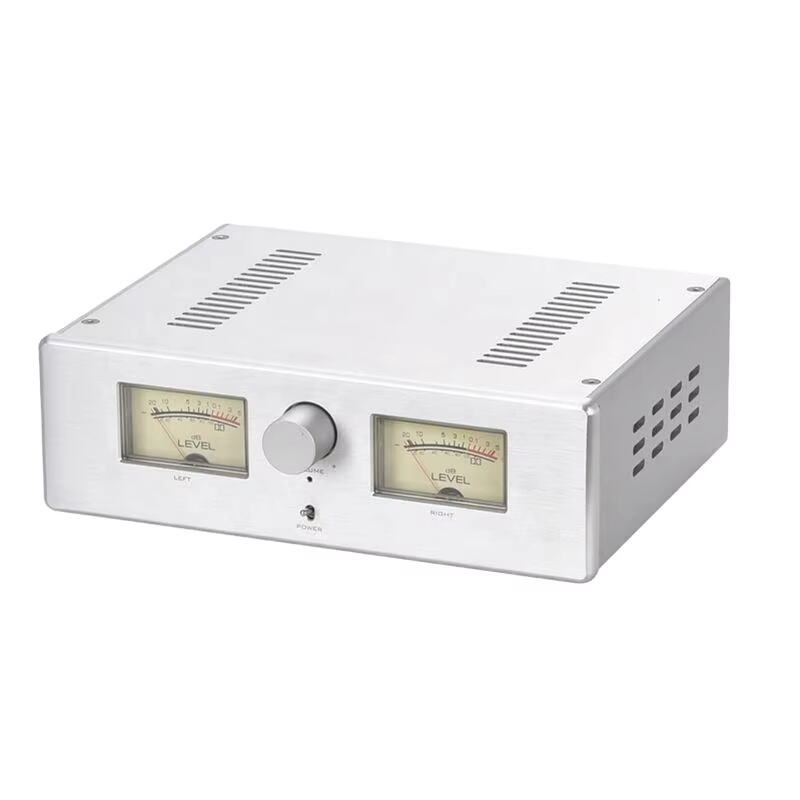Forstå fordelene med klasse AB-forsterkere
I verden av lydfortsterkning har jakten på den perfekte balansen mellom lydfidelitet og effektivitet ført til at klasse AB-forsterkere er blitt mye brukt. Disse forsterkerne kombinerer unikt de ønskelige egenskapene til klasse A og klasse B-design, og gir en overbevisende løsning for ulike lydanvendelser. Om du setter opp et high-end hjemmekinosystem, profesjonell lydutstyr eller forsterker musikkinstrumenter, vil forståelsen av fordelene med Klasse AB-forsterkere kan hjelpe deg med å ta informerte beslutninger for overlegen lyd.
Forsterkere av klasse AB har blitt en selveiende del av moderne lyd på grunn av sin unike drift og ytelsesfordeler. Denne artikkelen utforsker detaljene i Klasse AB-forsterkere og forklarer hvorfor de har tålt tidens tann og fremdeles er svært relevante i dagens teknologidrevne lydverden.
Design og drift av forsterkere av klasse AB
Hybriddrift for balansert ytelse
Forsterkere av klasse AB fungerer ved å slå sammen aspekter fra både klasse A og klasse B forsterkerdesign. Forsterkere av klasse A er kjent for sin fremragende lydkvalitet, men lider av lav effektivitet, siden de leder strøm gjennom hele bølgeformens syklus. På den andre siden forbedrer forsterkere av klasse B effektiviteten ved å lede bare halvparten av bølgeformens syklus per transistor, men kan innføre korsdistorsjon der utgangen går over fra én transistor til en annen.
AB-forsterkere overkommer disse begrensningene ved å forspenne utgangstransistorene slik at begge leder litt mer enn halvparten av syklusen, noe som reduserer korsforvrengning mens den forbedrede effektiviteten beholdes. Denne hybriddriften betyr at AB-forsterkere kan levere et rent, naturlig lydsignal med mindre energi tapt. Dette balansert forholdet er grunnen til at mange lydteknikere betrakter AB-klasser som en optimal avveining mellom lydfidelitet og strømforbruk.
Effektiv energibruk
En av de viktigste fordelene med AB-forsterkere er den forbedrede energieffektiviteten sammenlignet med A-forsterkere. A-forsterkere avgir betydelig varme fordi de kontinuerlig leder strøm, selv når det ikke er noen lydsignal tilstede. Denne kontinuerlige ledningen resulterer i betydelig strømforbruk og krever kraftige kjølingssystemer.
AB-forsterkere reduserer denne energitapet betydelig ved å la transistorene slå seg av i deler av innsignalperioden mens de opprettholder en liten forspenning for å unngå forvrengning. Resultatet er en betydelig reduksjon i varmeproduksjon, noe som fører til mindre krav til kjøling. Denne effektiviteten sparer ikke bare energi, men øker også forsterkerens levetid ved å redusere termisk stress på interne komponenter.

Overlegen lydkvalitet og ytelse
Redusert forvrengning og støy
Et stort salgsargument for AB-forsterkere er deres evne til å levere overlegen lydkvalitet gjennom reduserte forvrengningsnivåer. I B-forsterkere genererer det punktet hvor utgangen bytter mellom transistorer – kjent som kryssområdet – ofte hørbar forvrengning. AB-forsterkere minimerer denne effekten ved å opprettholde en liten overlapp i transistorledning, og dermed jevne overgangen.
Denne designet forbedrer vesentlig troheten i lydgjenproduceringen, noe som gjør klasse AB-forsterkere egnet for anvendelser der lydklarhet er av største betydning. Fra de subtile nyansene i klassisk musikk til de dynamiske omfangene i rockekonsertene, bevarer klasse AB-forsterkere lydets integritet uten å innføre harde artefakter eller støy.
Bred Bruksområde Fleksibilitet
Fleksibiliteten til klasse AB-forsterkere gjør dem til et ideelt valg for en rekke lydoppsett. De kan konfigureres for å drive små hodetelefonforsterkere så vel som store offentlige adresseringssystemer, og samtidig beholde sine ytelsesfordeler.
Denne tilpasningsevnen strekker seg til profesjonell lydutstyr, bilstereosystemer og hjemmekinosystemer, og viser deres universelle appel. Den robuste naturen til klasse AB-design betyr at de kan tilpasses for å møte de unike strøm- og kvalitetskravene i ulike miljøer uten å ofre påliteligheten.
Praktiske fordeler med klasse AB-forsterkere
Kostnadseffektivitet og pålitelighet
I forhold til forsterkere i klasse A, tilbyr forsterkere i klasse AB en mer økonomisk løsning, både når det gjelder produksjons- og driftskostnader. Deres høyere effektivitet fører til lavere strømregninger og reduserte behov for kjølingsinfrastruktur. Denne kostnadseffektiviteten gjør forsterkere i klasse AB attraktive for både kommersielle produsenter og sluttbrukere som søker ytelse uten overdreven utgift.
I tillegg til kostnadsevingsaspektet gir forsterkere i klasse AB økt pålitelighet. Ved å generere mindre varme opplever disse forsterkerne lavere termisk stress, noe som resulterer i færre feil og lengre driftslevetid. Denne påliteligheten er avgjørende for profesjonelle lydanvendelser der utstyrets oppetid er kritisk.
Forenklet integrering med eksisterende systemer
Forsterkere i klasse AB skiller seg også ut ved sin enkle integrering. Deres utgangsegenskaper – som impedans og effektbåndbredde – er kompatible med et bredt utvalg av høyttalere og lydkilder. Denne kompatibiliteten gjør at brukere kan oppgradere eller utvide sine lydsystemer med minimale kompatibilitetsproblemer.
Moderne forsterkere i klasse AB inneholder ofte beskyttelseskrester som forhindrer skader fra overoppheting, kortslutning eller overbelastning. Disse sikkerhetsfunksjonene beskytter både forsterkeren og tilkoblede enheter, og bidrar til et tryggere og mer brukervennlig lydmiljø.
Forbedring av brukeropplevelsen med forsterkere i klasse AB
Forbedret lyddynamikk og kontroll
Forsterkere i klasse AB er gode til å levere nøyaktig lyddynamikk, noe som gjør dem til et fremste valg for applikasjoner der detaljert lyduttrykk er avgjørende. Deres evne til å gjengi både de svakeste og sterkeste delene av et lydsignal uten forvrengning eller kompresjon sikrer at hvert eneste element i en fremførelse formidles autentisk.
Dette dynamiske omfanget er avgjørende i musikkproduksjon, live-lydforskyvning og high-end lydgjenopspilling. Den forbedrede kontrollen over lydoutput lar brukere oppleve lyd slik den var tenkt av skaperne, og forbedrer lytterengasjementet.
Fleksibilitet i tilpasning
Den fleksible designen til klasse AB-forsterkere gjør at produsenter og entusiaster kan tilpasse deres ytelsesegenskaper. Ved justering av transistorbiasing, tilbakekoblingssløyfer og komponentvalg kan man lage forsterkere tilpasset spesifikke tonale kvaliteter eller effektbehov.
Denne tilpasningsmuligheten gjør klasse AB-forsterkere attraktive for ulike anvendelser, fra audiophile systemer som prioriterer lydsparsomhet til robuste, kraftige enheter designet for krevende miljøer. Muligheten til å finjustere disse forsterkerne sikrer at de kan møte et bredt spekter av brukerpreferanser og tekniske krav.
Ofte stilte spørsmål
Hvordan sammenligner klasse AB-forsterkerens effektivitet seg med andre klasser?
AB-forsterkere tilbyr bedre effektivitet enn klasse A, men som oftest lavere enn D-forsterkere. De oppnår en balanse ved å forbedre energiforbruket uten å ofre lydkvaliteten.
Hva gjør at AB-forsterkere er egnet for høy kvalitet lyd?
Deres polariseringsteknikk reduserer korsforvrengning og minimerer støy, og sørger for at lydsignalene forblir klare og trofaste til originalkilden.
Er AB-forsterkere egnet for high-power-applikasjoner?
Ja, AB-forsterkere kan konstrueres for å håndtere et bredt spekter av effekter, og er derfor egnet både for små og store lydsystemer.
Hvilken vedlikehold krever AB-forsterkere?
Vedlikeholdet er minimalt, og innebærer hovedsakelig å sikre tilstrekkelig ventilasjon og å inspisere komponenter for slitasje, spesielt hvis forsterkeren brukes mye eller under krevende forhold.

